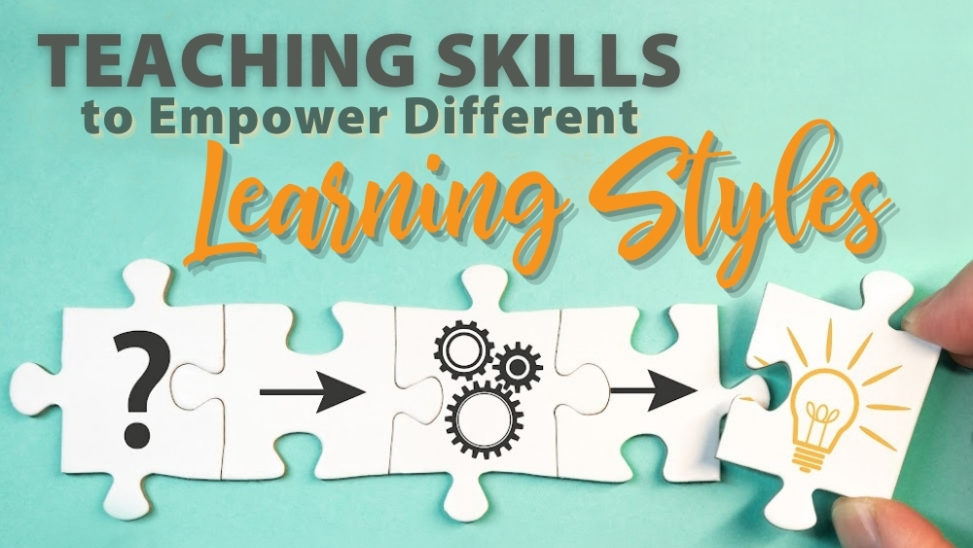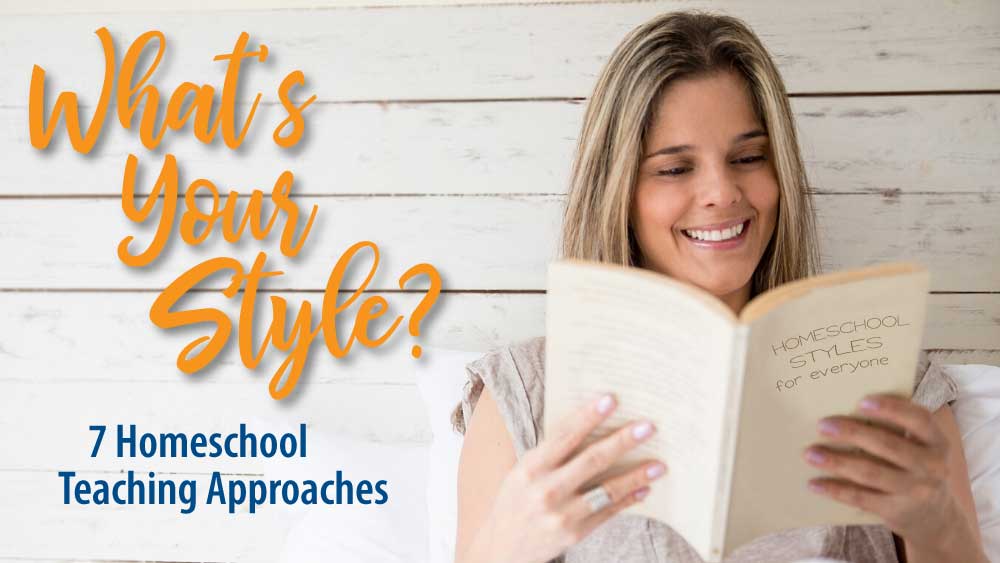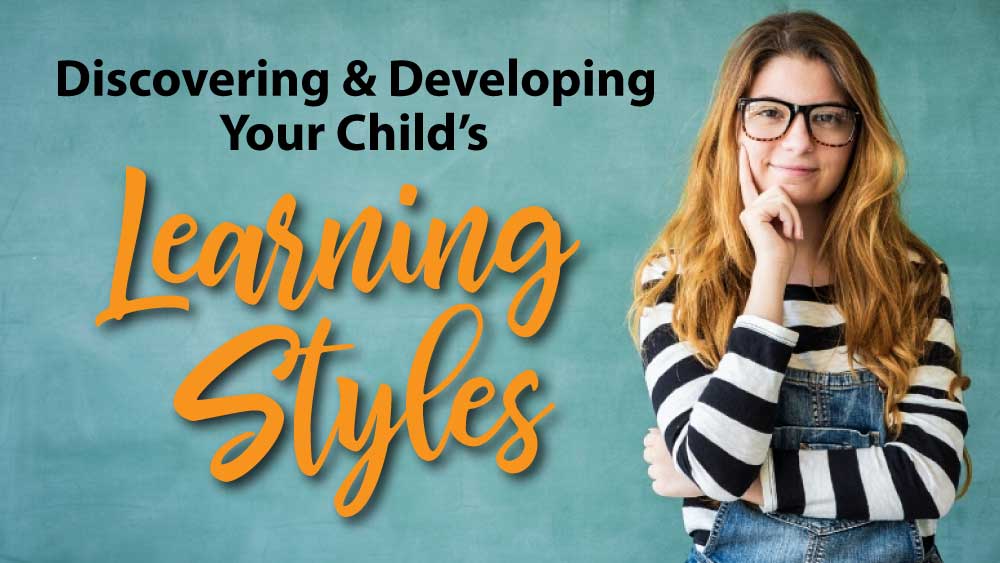There is hot debate amongst experts over whether learning styles can be determined by testing. They do agree, however, that encouraging a variety of learning methods increases retention and performance.
As a homeschooling parent,
you can help your child excel by
identifying different student learning styles,
determining your child’s preferred style,
and choosing curriculum based upon those preferences.
Even more, if you use targeted teaching skills to expand learning styles, you can empower your child to effectively receive information in multiple ways.
We all know people who need to write it down to remember or who quickly pick up the words to every song they hear.
These are great hints about personal learning styles in action.
What are the 4 main learning styles?
There are quite a few ways to categorize learning styles or learning preferences. Perhaps the most common and familiar is the VARK list.
Learning Styles According to the VARK Model:
- Visual
- Auditory
- Read/Write
- Kinesthetic
You’ll find a complete presentation of these four learning styles in our blog post, Discovering & Developing Your Child's Learning Styles.
Visual Learners
These learners gather visual clues from the world around them.
They absorb information more readily when it is presented through maps, diagrams, charts, graphs, and symbolic presentations.
However, before you plaster your walls with posters and other graphic materials, beware. The visual learner can be easily overwhelmed by an excess of visual aids.
They are also looking for visual clues from you, the homeschool teacher.
Facial expression and non-verbal communication can help draw your student into a lesson.
Auditory Learners
These students receive new information best when it’s spoken out loud.
In a homeschool setting, this can be read-alouds, audio books, group discussions, and oral reports.
Verbal learners enjoy singing songs, jingles, poems and the like as well.
Your tone of voice matters to the auditory learner as much as your teaching style. The same goes for the noise level of the learning environment.
One of my favorite work accessories can be invaluable to an auditory learner. It’s a pair of noise-canceling headphones.
My kids often pop their heads into my office and ask what I am listening to. I am almost never “listening” to anything. I use the noise-canceling feature to help me concentrate in a loud house full of teenagers.
The same trick can be extremely helpful for an auditory learner in a home with noise distractions.
Read/Write Learners
Students with this learning preference tend to be solitary learners who prefer the written word over the spoken word.
They like to write notes and may rewrite and review them to help them retain knowledge.
Most would prefer that you just give them a book and skip the graphic or audio supplements.
Follow up presentations of new concepts to read/write learners with deeper word study to build layers of understanding within the subject matter.
Help these learners retain information by displaying written notes as you speak and providing content outlines of subject matter.
Kinesthetic Learners
Physical movement is a must for these learners. They learn best through activities that utilize whole body movement.
Kinesthetic learners explore new ideas and information by doing actions, handling examples, and manipulating objects. These social learners also enjoy playing in a group setting.
This is, however, a learning preference that can result in conflict if the parent has a different preferred teaching style.
These students lose focus if they must sit for long periods of time. Many adults who struggled in school are kinesthetic learners.
There is freedom in discovering that your little guy is not actually defiant but, instead, has a body made to move.
By creating times where movement is welcome, you can adapt your teaching style to create spaces for learning with peaceful minds. That could be a loud game, a silly song, or a map exercise.
It might not look like peaceful learning to you, but, when you spot your kinesthetic child’s smile in the middle of the school day, you will feel it too.
My brother was a kinesthetic learner. He could only pass a spelling test if he was upside down and half out of a chair.
Today, he is a successful father and entrepreneur who manages several crews for his handyman business. Every day he meets new clients, tackles new jobs, and solves new problems. All that wiggling paid off.
Determining Your Child's Learning Style
You probably have a general idea of how your child learns best.
Just because there aren’t many proven tests to determine learning styles, don't let that stop you.
Your child can take a fun little diagnostic test if you’d like to see if it confirms your hunch.
You can use the learning styles checklists on our blog post as well.
Are you able to clearly identify a prominent learning style for your child, or do you see a combination of individual learning styles?
There are actually several more learning styles and tips about different approaches to teach each type of learner. Spend some time exploring them.
This helps you as a teaching parent in two ways.
First, it can help you to be mindful about how you present information.
We often teach in the way we like receiving information best. This tendency can cause us to overlook less familiar learning preferences.
As teachers at home, we should develop along with our students, learning the most effective methods to communicate new ideas to them.
Second, learning style insights can boost your teaching effectiveness.
Incorporate a few exercises in each of the learning styles listed and see how they go over in your homeschool. The ones that the children enjoy the most can become mainstays among your teaching tools.

Choosing Curriculum
with Learning Preferences in Mind
As you are preparing for the school year, evaluate the materials you are planning to use and see how many of your child’s learning style preferences are accommodated.
Next, think about ways that you can make some changes in how you present your curriculum. For instance, if you have a literature-based curriculum and a visual learner, perhaps your student could create a diorama while you read.
Come up with a list of adjustments you could make to integrate your child’s preferred learning style.
What if your curriculum is not working?
My number one piece of advice is to talk to the publisher. They likely have some constructive ideas about how to reshape your efforts with a few tweaks.
Did you buy a personal finance workbook and your child is balking at it? You might be speaking the wrong learning style language.
If, for example, you have a kinesthetic learner, instead of relying solely on a workbook, how about adding some field trips? Go to the store with the change jar or with your grocery budget. Teach by doing.
After discovering that working with money is fun, that reluctant child will be ready to practice with a few pages of a workbook.
What's the point?
The main reason to connect your instructional tools with your children’s learning preferences is to fully engage them into the learning process.
And, once you are seeing them making progress, check out these creative evaluation methods to measure it.

Why should you encourage your child
to use a variety of learning styles?
Helping your child to explore all the learning styles, not just a preferred one, can significantly enhance learning abilities.
We all tend to lean on our strengths and avoid the methods that are more difficult.
I experience this even in my adult years. As a strong visual learner, I often avoid tedious text-heavy manuals and instead search for instructional videos.
Yet, about ten years ago, a life episode provided a fresh perspective.
My mother had taken me out for a birthday lunch. As we browsed stores in the mall and chatted about the grandkids, I found a crochet kit that showed how to make a beanie.
It looked unassuming, but it changed the way I learn forever.
The image of the hat on the front of the kit was definitely cute. The only caveat was that the instructions were in plain text format – not my strength.
I was intimidated just looking at all those numbered steps and unfamiliar abbreviations. There weren't any pictures to help me, and where was the instructional video when I needed one?
If I had been alone,
I would have passed it up, thinking:
“I am not a learn-by-reading-instructions kind of person.”
But my mom, confident as only a former homeschooling mother can be, tossed it in her cart and declared it a birthday gift.
I wanted to meet her confidence and show her the finished hat, so I challenged myself to read the instructions instead of finding a video.
As I single-chained and double-chained my way to a very decent little hat, I discovered I could follow detailed written instructions.
The hat is long gone, but the greater gift was the discovery that I could operate successfully outside my preferred learning style.
This illustrates the value of teaching our children a variety of learning languages, methods, and styles.
We can provide a range of learning modes for them to explore. We can also help them strengthen the ones in which they are weak.
As a result, they will be better equipped for lifelong learning.
Why are learning styles so important?
Learning preferences are not a limitation, a formula, or a ticket to struggle-free homeschooling.
They are opportunities to connect with your learners in a way that is meaningful, fulfilling, and fun.
By accommodating their preferred learning styles while encouraging usage of the others as well, you will prepare them for life and learning beyond homeschool graduation.
Who knows? They might even crochet a beanie one day and surprise you.

Did you find this article helpful!
If so, please help us continue to provide resources and support
for homeschooling families in Iowa
by becoming a Homeschool Iowa member.
CHECK OUT MEMBER BENEFITS AND
JOIN NOW!



